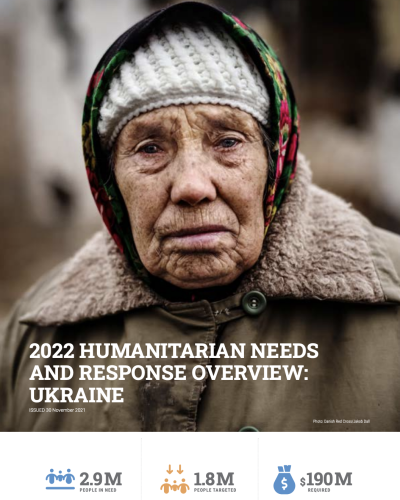2022 Humanitarian Needs And Response Overview: Ukraine

After seven years, the protracted humanitarian crisis has faded from global headlines causing mistaken perceptions that it is “frozen”. The ceasefire brokered in July 2020 has become increasingly fragile, resulting in the number of civilian casualties returning to pre-ceasefire levels. Civilian infrastructure is frequently coming under fire, and widespread contamination by explosive ordnance and mines remains a serious concern. With no political solution to the conflict in sight, it is likely that the humanitarian needs will continue with an increase in severity in 2022, particularly in NGCA.
The socioeconomic impact of the COVID-19 pandemic in eastern Ukraine has become more pronounced due to the prolonged closure of the “contact line”, restrictions on movement, and decreasing livelihood opportunities. Residents of NGCA, particularly the elderly, have been most impacted by restrictions on movement across the “contact line”, cutting them off from basic services and social entitlements, including pensions.
With the winter fast approaching and the COVID-19 epidemiological situation worsening, especially in NGCA, the operational environment has become increasingly complicated. The humanitarian crisis continues to be at risk of being politicized, and access constraints remain a serious challenge to humanitarian operations in certain areas of eastern Ukraine.









